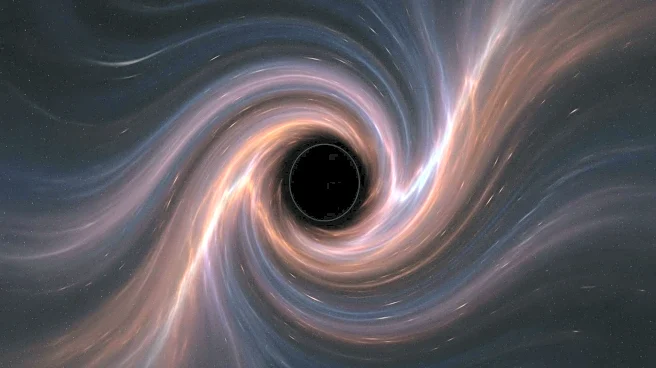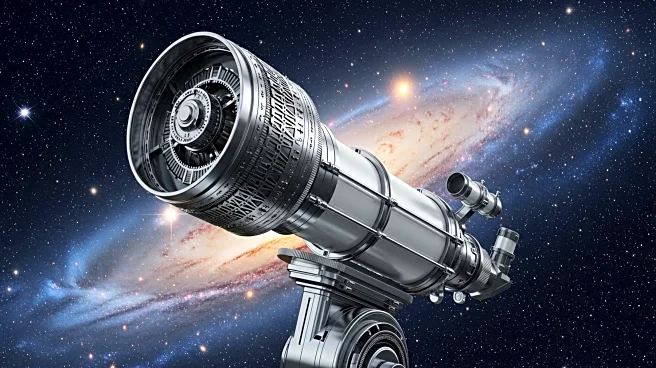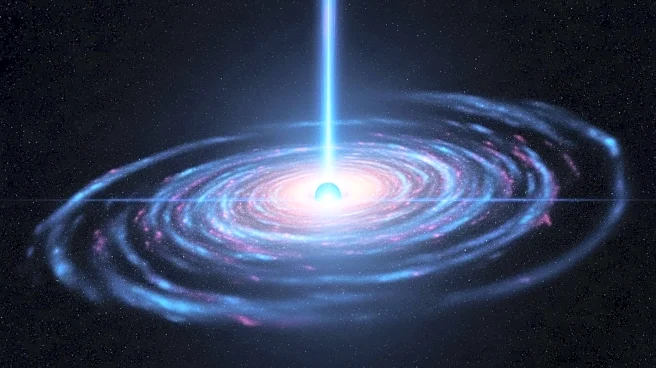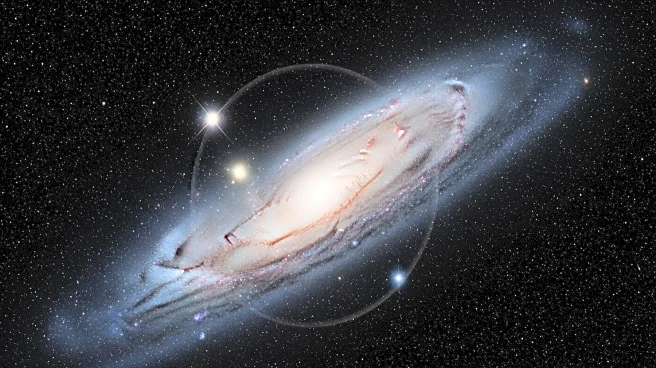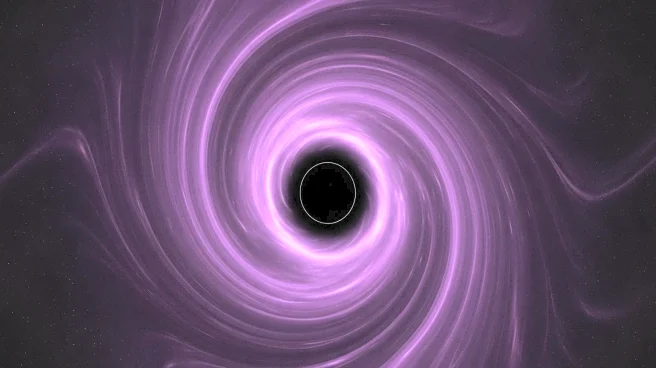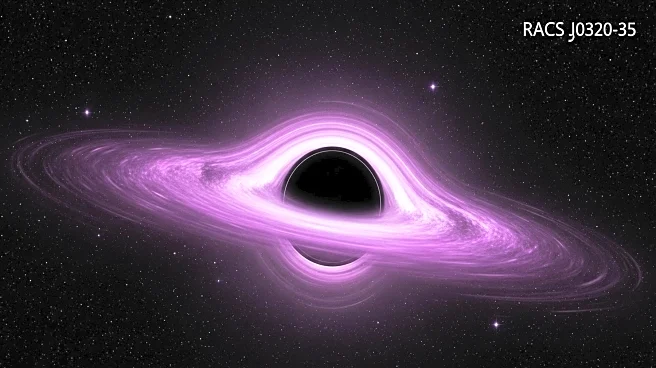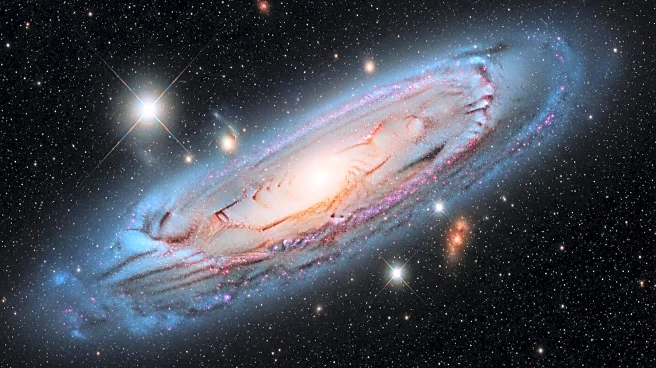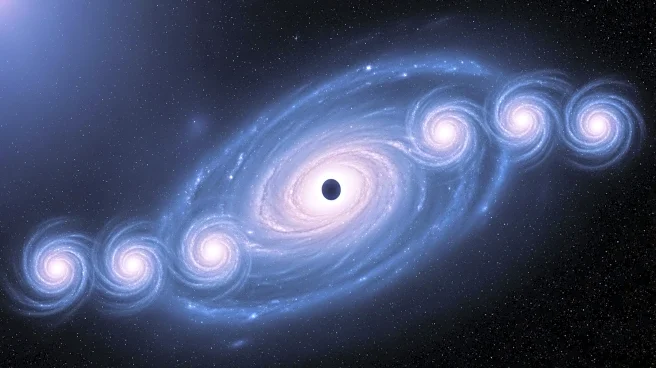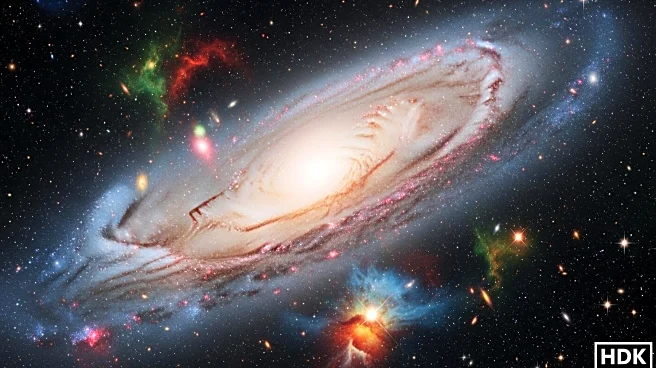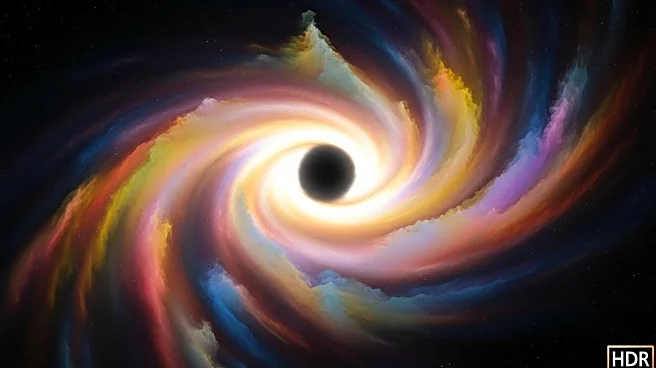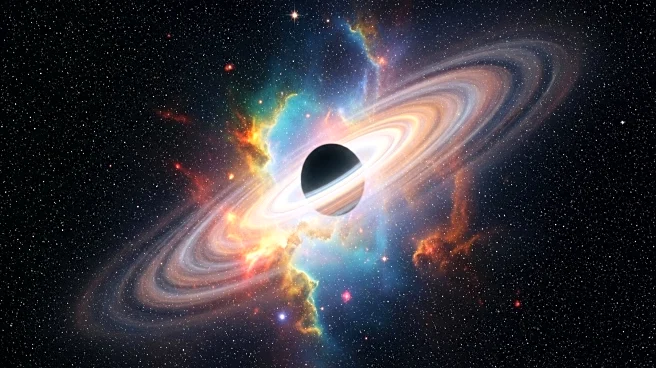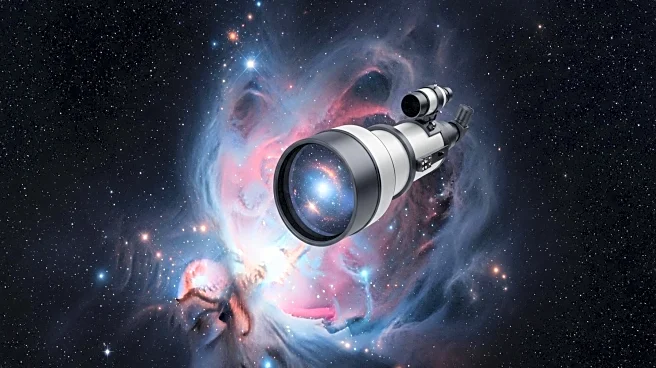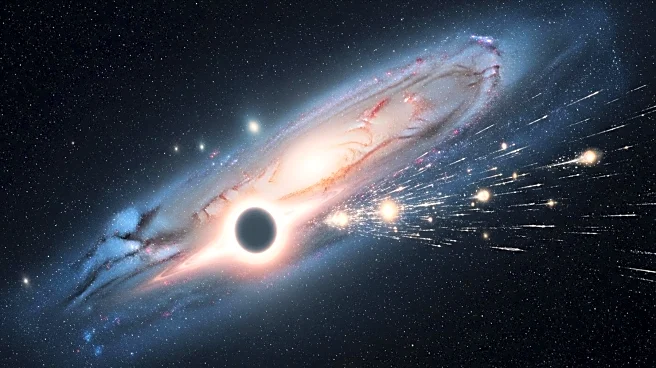What is the story about?
What's Happening?
A supermassive black hole in the quasar galaxy RACS J0320-35 is consuming matter at 2.4 times the Eddington limit, the theoretical maximum rate. This phenomenon, known as super-Eddington accretion, may explain how supermassive black holes grew to immense sizes shortly after the Big Bang. The discovery was made by a team led by astrophysicist Luca Ighina of the Harvard & Smithsonian Center for Astrophysics.
Why It's Important?
The discovery of a black hole exceeding the Eddington limit provides crucial insights into the early universe's formation of supermassive black holes. Understanding these processes can help scientists develop models for black hole growth and the evolution of galaxies. This knowledge is vital for astrophysics, as it addresses one of the biggest questions about the universe's early development.
What's Next?
Further research and observations are needed to validate the findings and explore the implications of super-Eddington accretion. Scientists may use RACS J0320-35 as a tool for modeling black hole formation and growth, potentially leading to breakthroughs in understanding cosmic history and the dynamics of the universe.
Beyond the Headlines
The study of supermassive black holes challenges existing theories about their formation and growth. Observational evidence of super-Eddington accretion could reshape our understanding of the universe's early stages and the role of black holes in galactic evolution.
AI Generated Content
Do you find this article useful?
